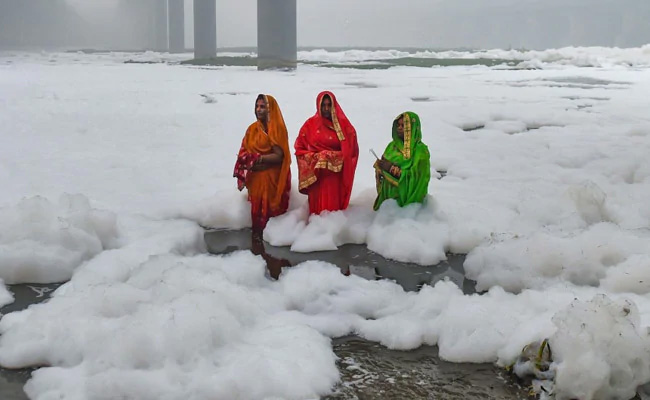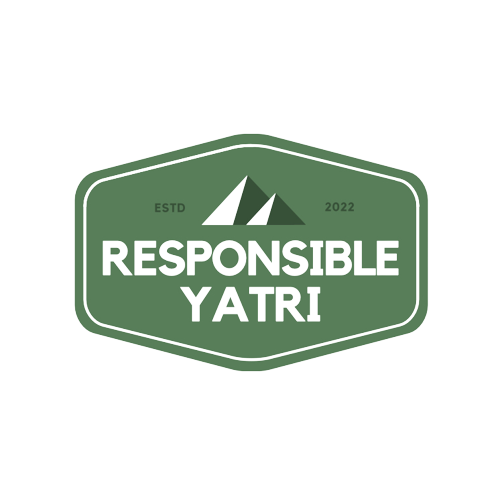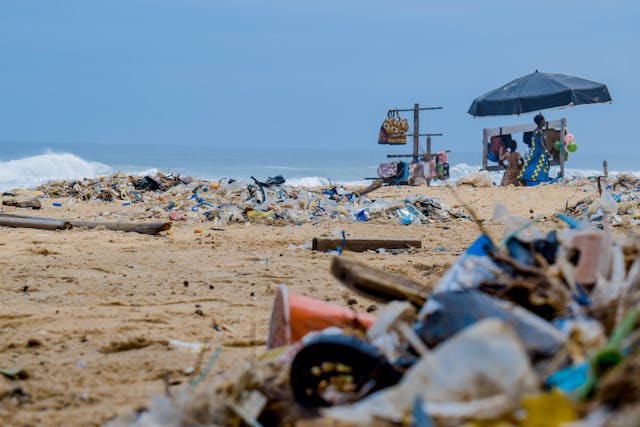The devotion of Chhath Puja transcends environmental challenges as devotees continue to worship amidst the toxic foam in the Yamuna River. Chhath Puja, a significant Hindu festival dedicated to the Sun God, involves a series of rituals performed with deep reverence and devotion. However, the recent environmental concerns surrounding the Yamuna, particularly the presence of toxic foam, have raised questions about the impact on the religious practices of those celebrating Chhath Puja along the riverbanks.

Symbolism of Chhath Puja:
Chhath Puja holds immense cultural and spiritual significance, with devotees expressing their gratitude to the Sun God for sustaining life on Earth. The rituals, including bathing in the holy river, making offerings, and standing in water for prolonged periods, are considered acts of purification and devotion.
Devotion Amidst Challenges:
- Spiritual Resilience: Devotees’ commitment to their faith is evident as they continue to engage in Chhath Puja rituals despite the challenging environmental conditions. The toxic foam, although a visible issue, has not deterred their spiritual resolve.
- Adaptability: The devotees showcase adaptability by incorporating necessary precautions into their rituals. Measures such as avoiding direct contact with the foam and using protective coverings demonstrate a balance between faith and practicality.
- Collective Faith: The shared faith among the devotees creates a sense of community, fostering mutual support and understanding. This collective spirit strengthens their resolve to uphold traditions even in the face of environmental challenges.
Challenges and Concerns:
- Health Risks: The toxic foam in the Yamuna raises concerns about the potential health risks associated with direct exposure. Devotees and authorities alike need to address these concerns to ensure the well-being of those participating in the rituals.
- Environmental Awareness: Chhath Puja provides an opportunity to raise awareness about the environmental issues affecting the Yamuna. The synergy between religious practices and environmental consciousness can lead to more sustainable approaches to worship.
Community and Environmental Harmony:
- Collaborative Solutions: To address the challenges posed by the toxic foam, collaboration between religious communities, environmentalists, and authorities is crucial. Working together can lead to sustainable solutions that preserve both religious traditions and the environment.
- Environmental Initiatives: Integrating eco-friendly practices into religious rituals, such as avoiding material offerings that contribute to pollution, can be part of a broader initiative to foster environmental consciousness.
In conclusion, the devotees’ unwavering faith during Chhath Puja amidst the challenges posed by the toxic foam in the Yamuna River reflects the resilience of the human spirit. As we navigate the intersection of religious traditions and environmental concerns, it becomes imperative to find holistic solutions that honor both aspects, ensuring a harmonious coexistence between devotion and ecological well-being.





